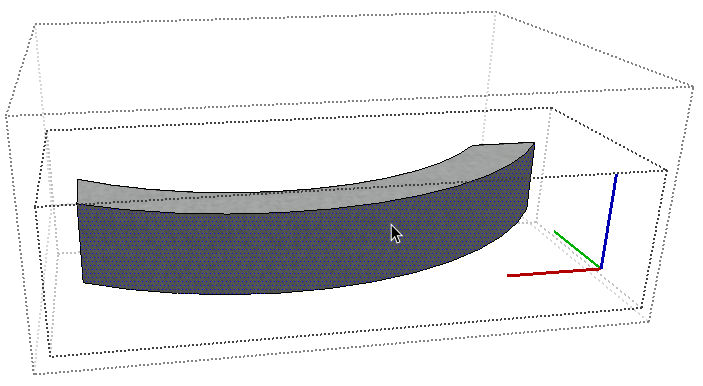
This known distance will make it easy later to move the curved text back against the curved face. I used a copy distance of 100 inches (or 8′-4″). The bending curve can be obtained from this curved face. I copied the lower edge of the curved face forward, in the green direction. But if the placement had been incorrect, I would have rotated the face to be mainly along the red axis. The text will be going in the red direction and bent to fit the curve, with a reference line in the red direction.

I then started a new file, and pressed Ctrl + V to paste in the copied curved face.Īs it happens, the placement of the face is just fine with respect to the red axis. In the coffee shop model, I drilled down into groups and nested groups, till I was able to select just the curved front face of the counter. Here’s how I got the curve along which the text will be bent. Then the bent objects can be brought back to wherever you need them. So I’ve found that the cleanest way to bend something is to start a new file and do the bending there.

When working with groups and components, which have their own sets of axes, it can get very complicated to understand where things are, relative to model axes.


(If you need to learn how to find and install an extension from the Extension Warehouse, see this post.) It does lots of things, but one of my favorite things to do with it is to bend 3D text along a curve. I love, love, love the CLF Shape Bender extension (by Chris Fullmer, available in the Extension Warehouse).


 0 kommentar(er)
0 kommentar(er)
